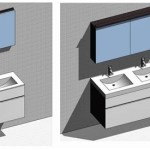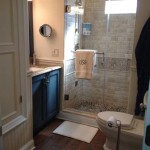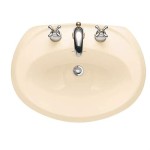How To Prep Bathroom Walls For Tile: Essential Aspects
Preparing bathroom walls for tile installation is a crucial step for ensuring a long-lasting and aesthetically pleasing result. Various essential aspects come into play during this process, including removing existing fixtures, cleaning the surface thoroughly, addressing any damage, and creating a level and smooth base. Understanding and following these essential aspects is paramount for a successful tile installation.
Transition: In this article, we will delve into the essential aspects of how to prep bathroom walls for tile. By addressing each of these aspects comprehensively, you can effectively prepare your walls for a seamless tile installation.
1. Removing Existing Fixtures and Hardware
Before starting the preparation process, it is essential to remove any existing fixtures or hardware from the bathroom walls. This includes towel racks, shelves, light fixtures, and mirrors. Carefully unscrew or detach these fixtures to prevent damage to the wall surface. Ensure you label each fixture for easy reinstallation after tiling.
2. Cleaning the Wall Surface Thoroughly
Once all fixtures are removed, thoroughly clean the bathroom walls to remove any dirt, dust, or debris that may interfere with the tile adhesion. Use a mild cleaning solution and a sponge or cloth to wipe down the walls. Rinse the surface with clean water and allow it to dry completely before proceeding.
3. Addressing Wall Damage
Inspect the bathroom walls for any cracks, holes, or other damage. Small cracks can be filled using a patching compound, while larger holes may require more extensive repairs, such as drywall patching or replacing damaged sections. Ensure the wall is level and smooth before tiling.
4. Leveling the Wall Surface
For optimal tile adhesion, the bathroom walls should be leveled and smooth. Use a level to check for any uneven areas and apply self-leveling compound or mortar to create a flat surface. Allow the leveling compound to dry according to the manufacturer's instructions before proceeding.
5. Ensuring Proper Ventilation
Adequate ventilation is crucial in the bathroom, especially after tiling, to prevent moisture build-up and mold growth. Ensure the bathroom has proper ventilation by installing an exhaust fan or opening windows during and after the tiling process.
6. Applying Backer Board (Optional)
While not always necessary, applying a backer board to the bathroom walls can provide additional support and enhance tile adhesion. Backer boards, such as cement board or drywall backer, create a more stable base for the tile and help prevent cracking or movement over time.
7. Avoiding Common Mistakes
To ensure a successful tile installation, avoid common mistakes such as not cleaning the surface properly, not leveling the walls, or using the wrong type of adhesive. Additionally, do not rush the process and allow ample time for each step to be completed correctly.

How To Prepare A Wall For Tiling Crown Tiles

How To Prepare A Tub Surround For Tiling

Tile Tub Or Shower Surround Wall Preparation Today S Homeowner

Preparing Walls For Tiling Removing Old Tiles Bathroom Guru

Preparing A Wall For Tiling Tools And Major Steps Rubi Blog Usa

Part 1 How To Install Tile On Shower Tub Wall Step By

How To Prep A Wall For Tile

19 Pro Tips On Shower Tile Installation

Bathroom Tiling How To Prepare Walls For Tile

Preparing Walls For Tiling Removing Old Tiles Bathroom Guru
Related Posts







